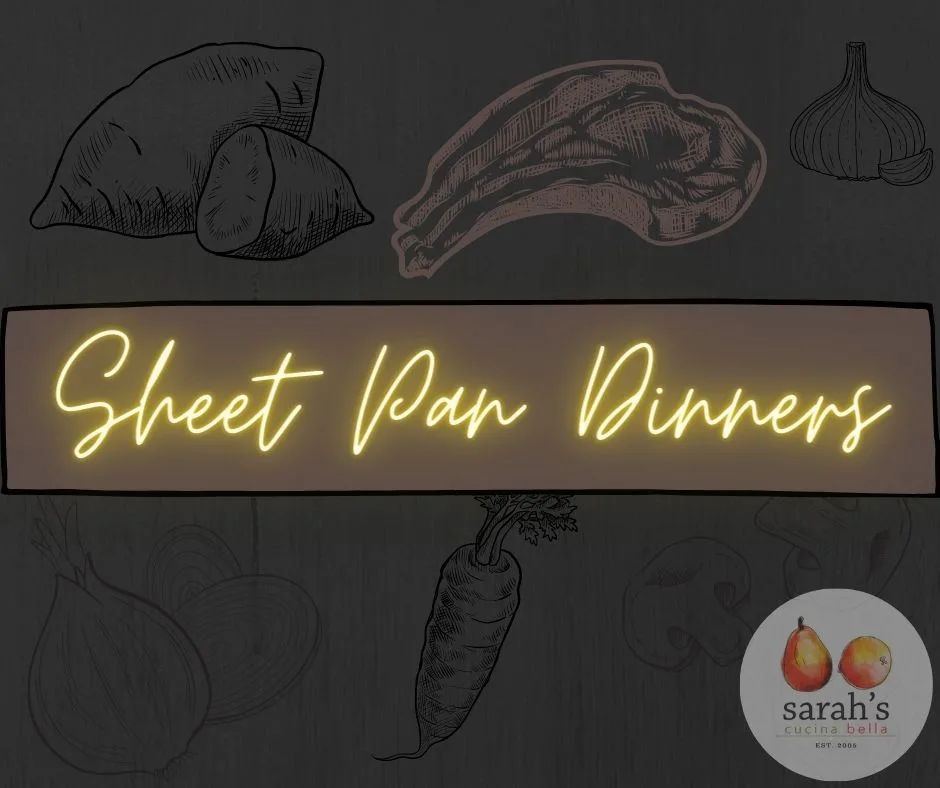With sheet pan dinners, you can cook your entire meal in a single pan. This saves time and effort — perfect for those busy nights.

It seems like such a great idea to cook dinner entirely using a single pan. But, as with any form of single-vessel cooking, there are some things you need to know for cooking success.
I asked the experts to offer some advice on how to create perfect sheet pan dinners. Here’s what they said.
Choose the Right Pan
Sheet pan dinners are best made in a rimmed pan — like the one you probably use for baking cookies. But what size should you choose?
“For most sheet pan recipes for a family, an 18-inch by 13-inch sheet pan is more than enough for a four-person meal with some leftovers,” said Jessica Randhawa of The Forked Spoon, a family-friendly recipe site.
Kristin Anderson, an editor for Recipe Lion, agreed. “You’ll have plenty of room to load up on veggies without crowding the pan. Lining the sheet pan with parchment paper is also a great tip, as long as you’re not using the broiler. It makes clean up a breeze and helps keep veggies from sticking to the pan.”
If you’re making sheet pan dinners with fewer portions — such as a meal for two — a smaller sheet pan will do the trick.
Don’t Overcrowd
For some oven recipes, you want to pile everything together, but with most sheet pan recipes, that isn’t the case.
“I won’t suggest layering ingredients because a crowded pan can cause the meals to become mushy,” said Vicky Cano of Mealfan.com.
This could also lead to uneven cooking or a longer cooking time, Anderson said.
But that’s not to say that ingredients shouldn’t touch during the baking process. In fact, letting them mingle will improve flavors.
“It’s totally fine for there to be a little overlap of ingredients on your sheet pan. In fact, your veggies will get some extra flavor if they’re mixed in a bit with skin-on chicken or sausage, for example. As those richer ingredients roast, they’ll release fat and juices that will add tons of flavor to the nearby vegetables,” Anderson said.
It’s Okay to Add Foods at Different Times
Of course, not all foods cook in the same timeframe. That’s why you might need to add shrimp, for instance, at the end of the cooking time or put the starches in first.
“Ingredients such as sturdy vegetables — carrots and potatoes — take longer to cook. They can take up to 30 minutes at least. Considering this, I’d suggest adding and cooking sturdy ingredients in the pan first. Later on, when they’re near their cooking point, add softer ingredients such as cabbage or beans. If you want the hard ingredients to cook faster, the best way is to cut them into smaller pieces. This will give a quick head start to the meal,” Cano said.
Adding ingredients at different times to ensure the optimum quality of your dish will also ensure that nothing becomes overcooked.
“If you’re cooking a sheet pan dinner with potatoes and steak, for example, you’ll want to cook the potatoes for a bit before adding the steak to the pan. Otherwise, your steak will be overdone by the time the potatoes are cooked through,” Anderson said.
You can also try to align the cooking times of the foods in sheet pan dinners, as Randhawa does with her recipe for one pan potatoes and sausage.
“One trick to cooking potatoes on a one-pan meal is to use halved baby potatoes to make sure the cooking time aligns with the meat. I tend to choose these cute little guys because I knew they would be easy to prepare and cook. However, any potato (sweet potatoes, red potatoes, fingerling potatoes, Yukon gold potatoes, russet potatoes) will work. Chop them into small cubes of approximately equal size to ensure even cooking time,” Randhawa said.
A Little Oil Goes a Long Way
For optimal cooking in sheet pan dinners, you want to make sure that the ingredients don’t try out. That’s where oil comes in.
Cano said you should make sure you are “coating the ingredients completely with oil so that they don’t dry up in the cooking process.”
But you don’t necessarily need a lot of oil to achieve this. In fact, when it comes to cooking dishes like my Sheet Pan Garlic Salmon with Roasted Snap Peas, a spritz of cooking oil spray will do the trick.
End with a Flourish, If You Want
If you’re anything like me, you love those flavorful bits that get stuck to the pan during cooking. But how can you incorporate them into the dish? Randhawa suggests adding white wine to the pan when there are about 15 to 20 minutes left in the cooking time.
“Wine does a couple of things when added about halfway through. First, it deglazes any vegetable bits stuck to the pan. Secondly, it adds flavor as it evaporates fast,” Randhawa said.
Ready to try some of your own? Check out my roundup of Vegetarian Sheet Pan Dinners and don’t miss other great sheet pan recipes like Sheet Pan Garlic Salmon with Roasted Snap Peas.
